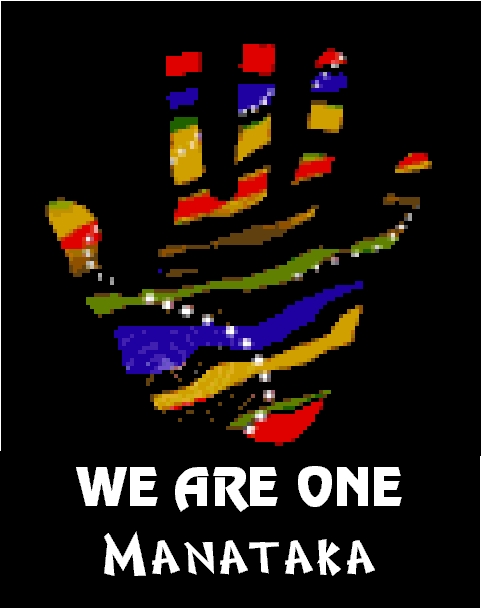The 14th century was an extraordinarily productive time for the Hopi potters. New clays and firing techniques were discovered, changing the relatively soft texture of the earlier pottery into a superb new texture, much smoother, much harder and more dense. Entering the 15th century with this new and better pottery, the Hopis experimented with a host of new ideas, including some daring departures from design symmetry, the incorporation of life forms and the development of artistic precision in the execution of both pots and decorations. This movement culminated in the development of Sikyatki Polychrome. (It should be pointed out that similar productivity has been discovered at several other pre-historic Hopi sites, including Awatovi and Jedito.)
Clay used in most parts of the Pueblo world, including the Rio Grande area, has almost always been too gritty or otherwise unsatisfactory to use for the finished surface of a decorated pot. To compensate, a much finer textured clay slip was applied to the surface and polished with a smooth stone, then the designs were painted onto the polished slip. The newly discovered Hopi clay turned out to be so smooth in texture and fired to such a beautiful range of colors, golden yellows to oranges, that there was no need for a covering slip. Thus designs could be painted directly on the polished body of the pottery.
Paint made from a mixture of boiled herbs or ground minerals, or colored clays could be painted directly onto the polished body of the pot itself. This new flexibility in materials significantly increased the size of their color pallets, reds, oranges, yellows, browns, as well as black. The new materials and the new artistry of the potters produced a genre of pottery called Sikyatki Polychrome. This style lasted until the late 1600's, at which time the quality of Hopi pottery began to deteriorate, and remained at a low level until Nampeyo, in the late 1800's, brought about the so-called Sikyatki Revival, or more recently and more aptly called the invention of Hano Polychrome.
The Sikyatki style is named after a prehistoric pueblo, which according to recent archeological dating, existed between 1375 and 1625. The ruins lie about 3 miles north of First Mesa. It was destroyed by intra-tribal rivalry. Shards of pottery quite similar to the Sikyatki pottery also have been found at the Hopi ruins of Jedito and Awatovi. (Awatovi, like Sikyatki, was destroyed by intra-tribal rivalry; however, much later, in 1700. Access to this area is extremely limited.)
Nampeyo was of Hopi-Tewa descent. In 1702, a group of Rio Grande Tewas was invited to the Hopi mesas to protect the locals from marauding Utes and Navajos. Although there has been a significant amount of intermarriage between the Hopis and the Tewas, the Hano villagers atop First Mesa still maintain a partial separatism, and some antagonism toward the Hopi.
The friction occurred when the Hopis, at first, did not accept the invited Tewas until they proved themselves in battle. After the Tewas drove off a Ute war party, the Hopis allowed the Tewas to form Hano. Later, the Hopi-Tewa began to settle at the base of the mesa, in
Polacca.

Nampeyo Designs her Pottery
Photo by Edward S. Curtis, ca. 1905
And now we come to Nampeyo. Nampeyo's birth date is placed at somewhere around 1860, an approximation due to a lack of written records. She was born in Hano, the small Hopi-Tewa village on First Mesa. Her mother, White Corn, was a Tewa woman of the corn clan from Hano, and her father was Quootsva, a Hopi man from nearby Walpi. Since the Hopis are a matrilineal society, Nampeyo grew up with her mother's corn clan family in Hano. (Today, you can drive to the top of First Mesa and see the villages.)
Hopi life, even from childhood, is filled with religious ceremonials, accompanied by dances performed by masked Katsina figures. Being a member of her mother's clan, Nampeyo no doubt became educated in the Hopi-Tewa Way, and participated in the rituals, herself. Along with her fellow Hopis, you can also imagine that she participated in the work of the village, helping with the annual corn crop, grinding corn, fetching water, potting, and housekeeping. By the time she was 15, following Hopi tradition, she was a productive member of her village. In one of the few snippets of information accredited to Nampeyo, she stated that she learned the craft of pottery making from her Tewa mother. So, as a young girl, Nampeyo started on her life's work as a potter.
An interesting side bar, by a quirk of fate William Henry Jackson, the noted western photographer, took pictures of 15-year-old Nampeyo. As a member of the 1875 Hayden Survey of Western America, Jackson and other members of the survey party took their meals at the home of Nampeyo's brother, Tom Polacca, one of the head men at Hano. Looking for "typical" Hopi subjects, with an introduction by her brother, Jackson photographed Nampeyo. She was described as a small woman, less that 5 feet tall, a gentle woman, gracious to outsiders.

Nampeyo married when she was twenty, making the year ca. 1878. This was to her lifelong husband, Lesso, son of a Walpi elder. Following tradition, she and Lesso made their home near her mother in the Hopi-Tewa village of Hano. There, they had five children, Annie, 1884; William, 1887; Nellie, 1896; Wesley, 1899; and Fannie, 1900. They were together until Lesso died in 1930, 52 years later.
The same year as the Jackson visit, 1875, the first trading post was established on the Hopi Reservation, by Thomas V. Keam at a location about 10 miles east of First Mesa. The location became known as Keams Canyon (and the trading post is still there, operated by the McGee family). Tom Keam developed a great empathy for the Hopi people, and promoted the making and sale of Hopi artifacts to aid their meager sustenance. The Hopis, not of their own making, were being forced into a society that ran on dollars, and Keam provided one of their few opportunities for making dollars. Putting all this together, it is almost certain that Nampeyo was bringing pots to Keam and trading them for dollars.




No comments :
Post a Comment